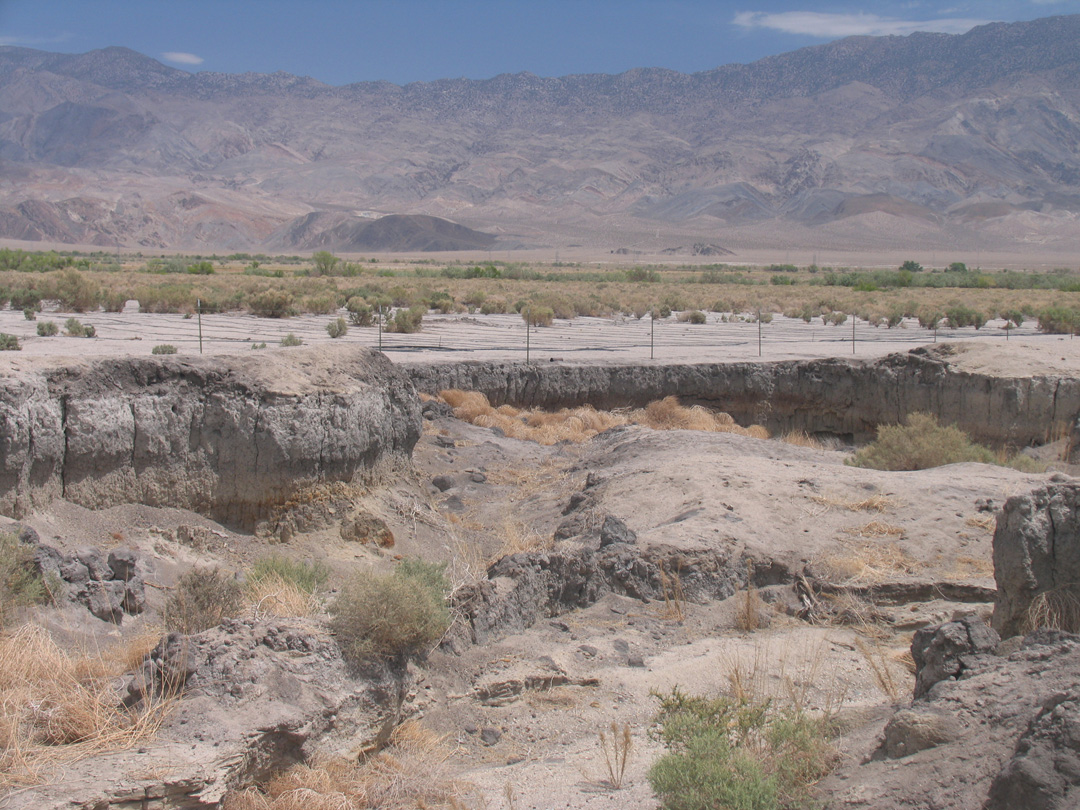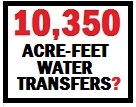See AquAlliance response to this article.
by Matt Weiser (mweise@sacbee.com)
Published Sunday, March 24, 2013
It may be the most ambitious habitat restoration project ever conceived in the United States.
The Bay Delta Conservation Plan proposes to restore one of every five acres in the Sacramento-San Joaquin Delta, breaching levees on some of the estuary’s 70 islands to create tidal wetlands and marshes.
It also proposes diverting the Sacramento River through two massive tunnels, 35 miles long, using three new intakes near Courtland, each nearly a half-mile square.
The idea is to revive native fish species that are drifting toward extinction and protect a freshwater supply essential to the world’s eighth-largest economy.
No one knows for sure if it will work. Or if the estimated $23 billion cost will seem like a fantasy decades from now, when construction is projected to be done.
Despite these high stakes, as the process now stands California voters will have no formal say in approving the plan. Nor will the state Legislature.
“We feel we have the vested authority from the California Legislature to construct this facility,” said Mark Cowin, director of the California Department of Water Resources, whose agency would own and operate the new plumbing.
As the plan is finalized in the year ahead, the public will have opportunities to comment and criticize, as residents would with a new housing subdivision or highway widening or any other project subject to the Endangered Species Act and the California Environmental Quality Act.
But in the end, the transformation of the largest estuary on the West Coast of the Americas is slated to be shaped and approved by a handful of appointed government officials.
Cowin is one of them. Appointed by Gov. Jerry Brown, Cowin is charged with assuring that the plan serves the interests of the urban and agricultural agencies that buy mass quantities of water from the Department of Water Resources. This includes urban utilities in San Jose, Los Angeles and San Diego, and farms in the San Joaquin Valley.
Under Endangered Species Act requirements, he must also ensure that the plan restores wildlife, whose fate will influence how much water is available for delivery.
The “vested authority” that Cowin says his department wields to build the project, and to issue bonds to pay for it, rests in two laws: the Burns-Porter Act of 1960, which authorized the State Water Project, the plumbing system that diverts water from the Delta for DWR customers; and the State Central Valley Project Act of 1933, which originally conceived the federal diversion system in the Delta. Both were approved by the Legislature and voters.
Cowin said these acts do give lawmakers some authority over the process.
“What the Legislature gives you, they can take away,” Cowin said. “So we plan to work very hard to keep the Legislature informed.”
$220 Million Spent to Date
The plan for the Delta’s transformation began seven years ago, during the administration of then-Gov. Arnold Schwarzenegger. The approximately $220 million spent so far to draft the plan came from two dozen water utilities that depend on the State Water Project, operated by DWR, and on the Central Valley Project, operated by the U.S. Bureau of Reclamation. Both canal systems divert water from the Delta, serving 25 million Californians and 3 million acres of farmland.
Brown last year made the Bay Delta Conservation Plan a centerpiece of his own agenda for the state.
Bonds sold by DWR to pay for construction are to be repaid by ratepayers at the water agencies backing the project. Cowin said these ratepayers serve as another layer of accountability, although he acknowledged that virtually none of them resides where the new Sacramento River diversions would be built, or in the upstream watershed.
This is why DWR is releasing so much of the documentation for the project early, he said, before the plan is finalized for public hearings later this year.
Earlier this month, DWR released the first four draft chapters of the planning document – more than 2,000 pages of material – and on Wednesday it will release three more chapters. In April, it plans to release a preliminary draft of the project’s environmental impact report.
Still, as now laid out, the only real veto power over the project lies with state and federal wildlife agencies: the California Department of Fish and Wildlife, the U.S. Fish and Wildlife Service and the National Marine Fisheries Service. These agencies are responsible for ensuring that the plan satisfies state and federal endangered species acts.
The stakes are high, because the project seeks a 50-year permit as a habitat conservation plan, a legal status that locks in many operating terms.
A vital question for these agencies is whether the new tunnels will leave enough water in the Sacramento River to protect endangered wildlife, such as spring-run chinook salmon and Delta smelt.
Charlton Bonham, director of the California Department of Fish and Wildlife, said last week that this question “worries the hell out of me.”
Bonham has a challenging role. As an appointee of Brown, like Cowin, he has political obligations. But he is also duty-bound to protect endangered wildlife and to enforce the state Endangered Species Act against the thirst that pulls on the Delta, much of it in Southern California.
“If we’re successful, Southern California is wedded to the biological goals and objectives more than they’re getting a fixed amount of water,” said Bonham, who was California director at Trout Unlimited, an environmental group, before his appointment. “I’m hopeful we’ll be able to create the permitting scheme that accommodates that.”
Though voters have no formal place in the process, Bonham said he welcomes a robust public discussion in the year ahead.
“It’s going to be one fat, healthy, long public debate,” he said.
Appeals Panel Lacks Power
Another key figure in deliberations is Phil Isenberg, the former mayor of Sacramento and state legislator who is now chairman of the Delta Stewardship Council. A 2009 law called the Delta Reform Act created the council and gave it limited oversight concerning the Bay Delta Conservation Plan.
Of the council’s seven members, four are appointed by the governor, one each by the Assembly and Senate, and the seventh is chair of another public body, the Delta Protection Commission. They are charged with hearing appeals of the plan. But they have no power to change it.
“It is 100 percent certain that someone will make this appeal,” said Gregory Weber, a water law expert at University of the Pacific’s McGeorge School of Law in Sacramento, who is not involved with the council.
The council can make recommendations to Cowin’s and Bonham’s agencies on how the Bay Delta Conservation Plan is carried out, and the agencies must consult with the council on those recommendations. But the recommendations cannot change the original permits that authorize the plan.
“We can say, ‘Yes, it complies with the requirements of law,’ or ‘No, it does not,’ ” Isenberg said. “And we can ask questions. But we cannot change” the plan.
In short, the council is a sort of weak referee: It can call fouls, but it cannot eject a player or cancel the game.
The Delta Reform Act states that the Bay Delta Conservation Plan “shall be considered” as part of the Delta’s future. It also sets out some limits, one of which could become crucial.
It says the plan must include a comprehensive analysis of the “flows necessary for recovering the Delta ecosystem and restoring fisheries.”
As drafted, the plan proposes to defer much of this analysis to a “decision tree” process after the plan is approved and during construction of the tunnels and intakes.
“I am concerned about that,” said Senate President Pro Tem Darrell Steinberg, D-Sacramento, co-author of the Delta Reform Act. “That needs to be done at the same time (the Bay Delta plan) is under consideration. This is obviously a subject for discussion and an area where the Legislature may want to weigh in.”
Weber, the McGeorge professor, said this language may prevent the tunnels from being built. It also could prevent the project from receiving state funding.
The state funding now proposed is $4 billion to pay for as much as 145,000 acres of habitat restoration. This could come from a water bond that Steinberg hopes to see on the 2014 ballot.
It may take lawsuits, however, to decide what these limits in the law really mean.
A voter referendum also could decide the matter, such as the ballot measure approved in 1982 that blocked a peripheral canal, an earlier Sacramento River diversion proposal.
Legal experts say the 1982 vote has no influence today because it did not change state law. It merely blocked a specific canal design.
“I think that path is kind of far off yet,” said Barbara Barrigan-Parrilla, campaign director at Restore the Delta, a coalition of Delta residents and community groups that opposes the project.
“Will people in the Delta be leading the charge if it gets to that? Yes. People in the Delta will fight to the end on this.”
© Copyright The Sacramento Bee. All rights reserved.

